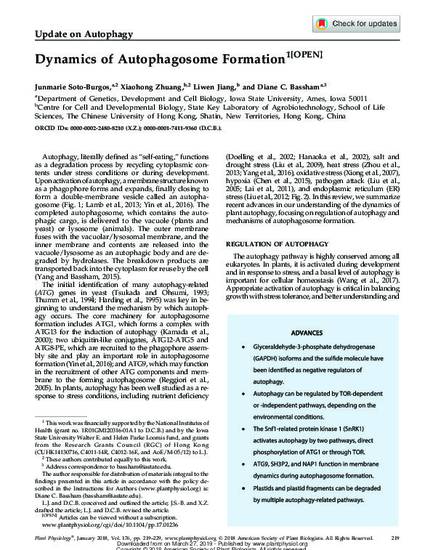
Autophagy, literally defined as “self-eating,” functions as a degradation process by recycling cytoplasmic contents under stress conditions or during development. Upon activation of autophagy, a membrane structure known as a phagophore forms and expands, finally closing to form a double-membrane vesicle called an autophagosome (Fig. 1; Lamb et al., 2013; Yin et al., 2016). The completed autophagosome, which contains the autophagic cargo, is delivered to the vacuole (plants and yeast) or lysosome (animals). The outer membrane fuses with the vacuolar/lysosomal membrane, and the inner membrane and contents are released into the vacuole/lysosome as an autophagic body and are degraded by hydrolases. The breakdown products are transported back into the cytoplasm for reuse by the cell (Yang and Bassham, 2015).
Available at: http://works.bepress.com/diane-bassham/31/

This article is published as Soto-Burgos J, Zhuang X, Jiang L, Bassham DC. Dynamics of Autophagosome Formation. Plant physiology. 2018; 176:219-229. doi: 10.1104/pp.17.01236. Copyright American Society of Plant Biologists. Posted with permission.